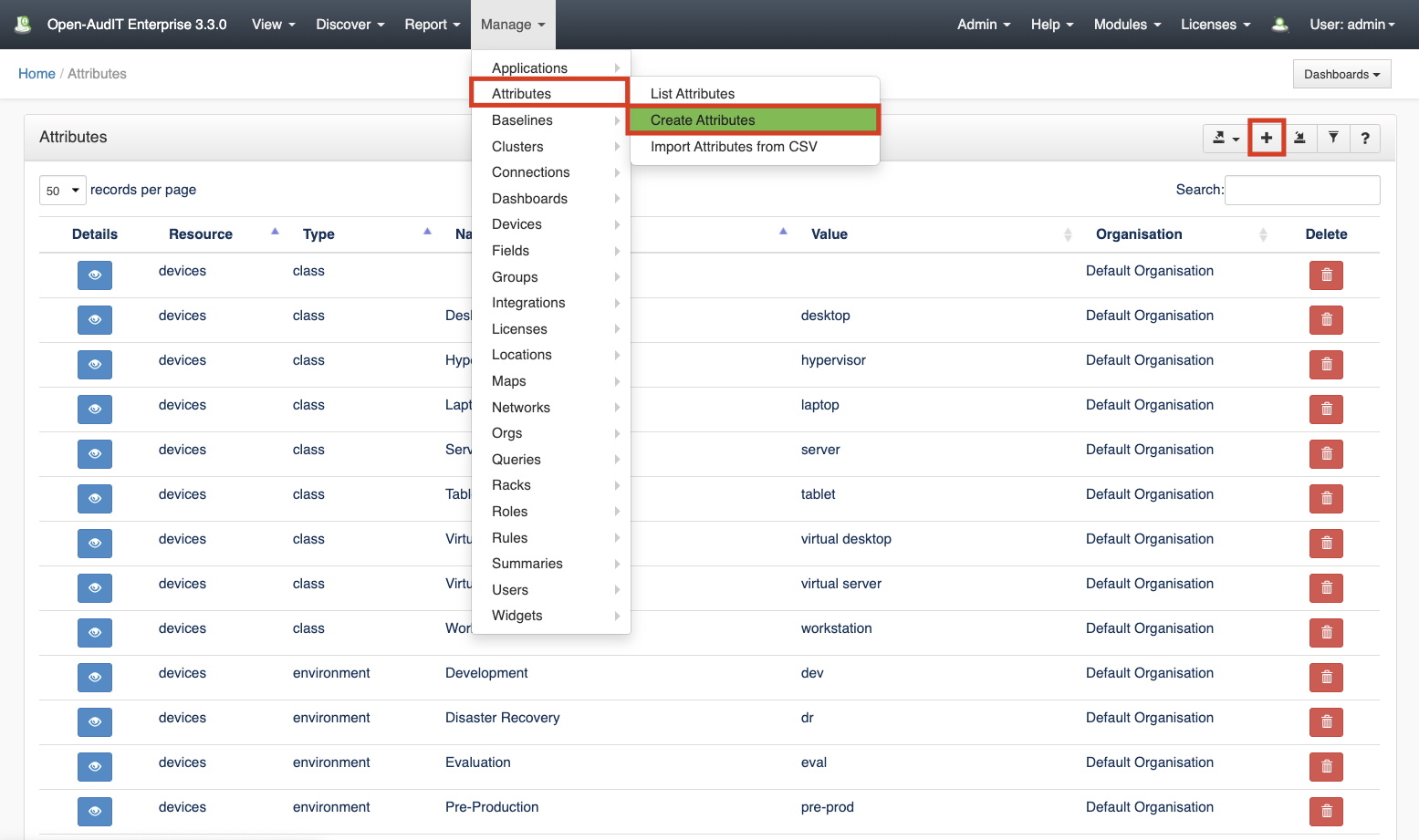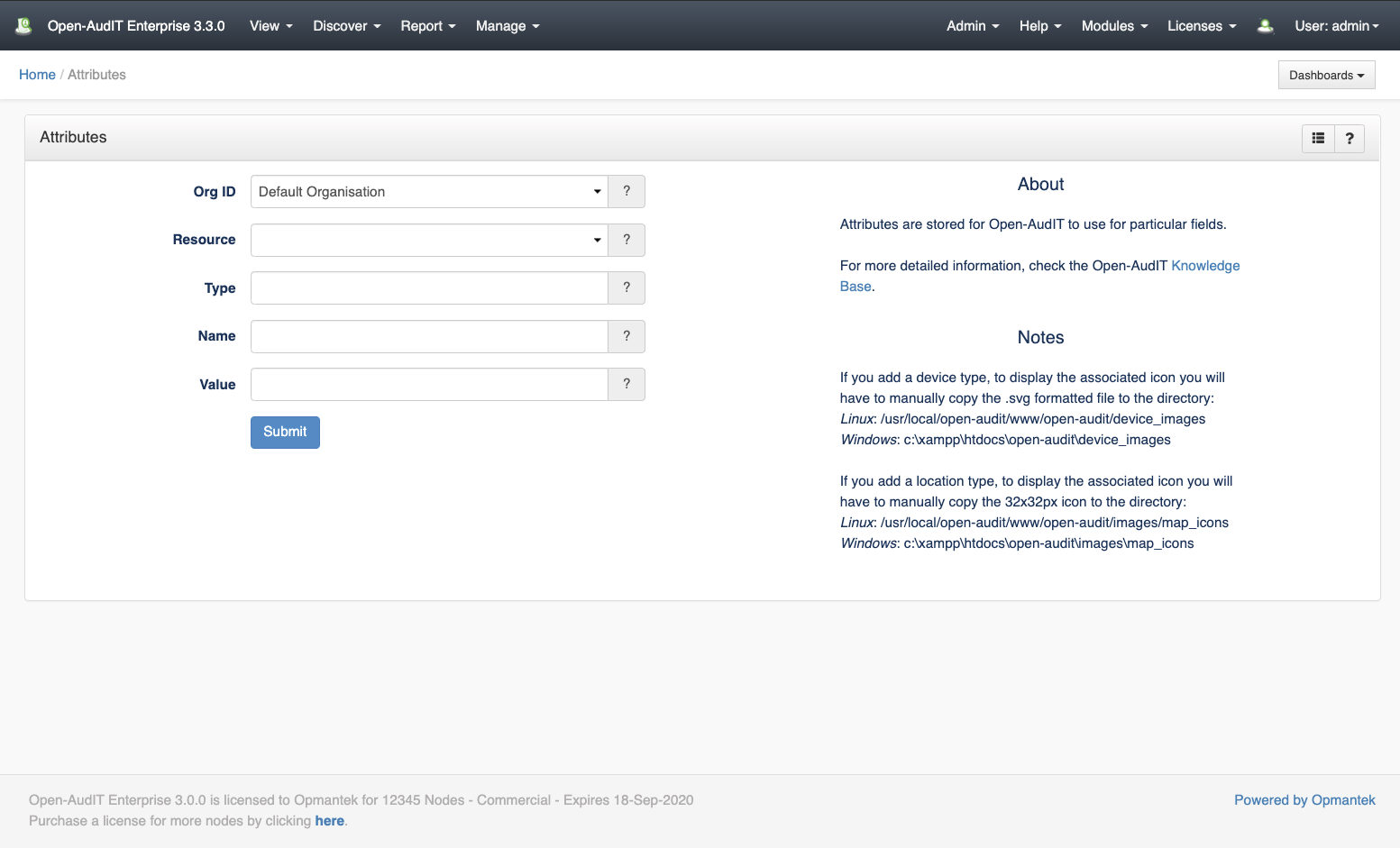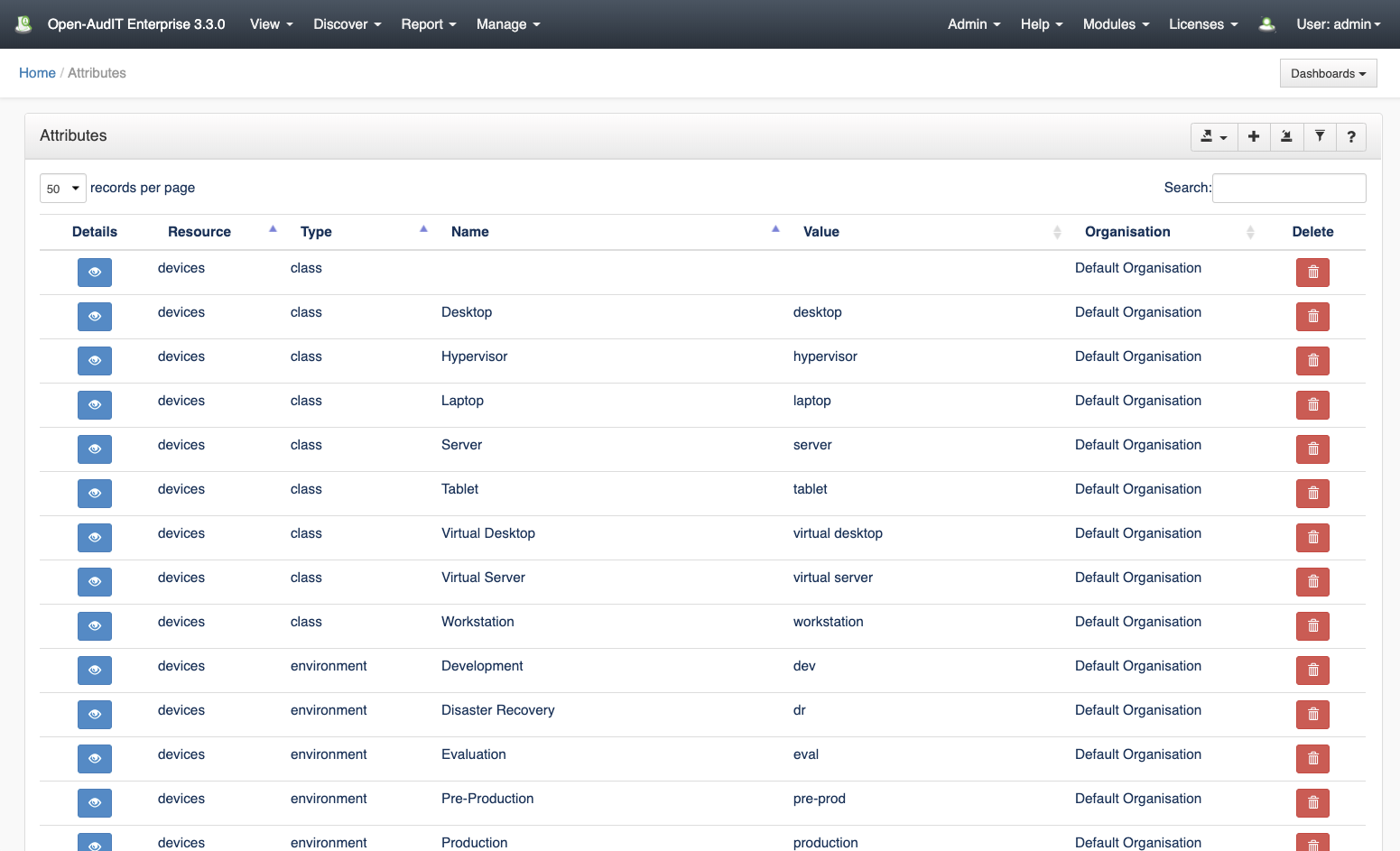Introduction
The Attributes endpoint allows you to add customized values to different attributes in Open-AudIT, at the moment this feature works on the Class, Environment, Status and Type attributes on Devices
...
, the Type attribute for both Locations and Orgs as well as the Menu Category for Queries. If you view an item of one of the prvious types (say view a Lkocation) you will notice the Type attribute must be selected from a drop-down box. This is where those values are stored. Hence, if you would like to add a new Type to be chosen for a Location, add it using the Attributes feature.
How Does it Work?
...
Attributes are stored for Open-AudIT to use for particular fields, at present all fields are based on the devices, locations, orgs and queries tables.
The attributes you can edit are associated with the following columns: Class, Environment, Status & Type.
Notes:
If you add a device type, to display the associated icon you will have to manually copy the .svg formatted file to the directory:
- Linux: /usr/local/open-audit/www/open-audit/device_images
- Windows: c:\xampp\htdocs\open-audit\device_images
If you add a Location Type (for v5.0.0), add those icons to:
- Linux: /usr/local/open-audit/public/images/map_icons
- Windows: c:\xampp\htdocs\open-audit\images\map_icons
Creating an Attribute Entry
...
An attribute entry can be created using the web interface if the current user logged in has a role that contains the
...
attribute::create permission. Go to menu: Manage ->
...
Attributes -> Create
...
Attributes. Also can be created from the
...
Attributes View, using the "Create" button.
To add a new value for an attributes you need to select an organization, select the type of attribute, provide a name and the value.
You have to select one of the types from the drop down menu (device_class, device_environment, device_status, device_type).
...
...
...
| Section |
|---|
View Attributes Details
Go to menu: Manage-> Attributes -> List Attributes.
...
Database Schema
The database schema
...
can
...
be found in the application is the user has
...
database::read permission by going to menu:
...
Admin -> Database -> List
...
Tables, then clicking on the
...
details button for the table.
...
| No Format |
|---|
Create Table: CREATE TABLE `attributes` (
`id` int(10) unsigned NOT NULL AUTO_INCREMENT,
`org_id` int(10) unsigned NOT NULL DEFAULT '1',
`resource` varchar(200) NOT NULL DEFAULT '',
`type` varchar(200) NOT NULL DEFAULT '',
`name` varchar(200) NOT NULL DEFAULT '',
`value` varchar(200) NOT NULL DEFAULT '',
`edited_by` varchar(200) NOT NULL DEFAULT '',
`edited_date` datetime NOT NULL DEFAULT '2000-01-01 00:00:00',
PRIMARY KEY (`id`)
) ENGINE=InnoDB AUTO_INCREMENT=103 DEFAULT CHARSET=utf8 |
A typical entry looks as below.
| No Format |
|---|
id: 102
org_id: 1
resource: devices
type: device_type
name: Wireless Router
value: wireless router
edited_by: system
edited_date: 2000-01-01 00:00:00 |
API / Web Access
You can access the
...
collection using the normal Open-AudIT JSON based API. Just like any other collection. Please
...
see The Open-AudIT API documentation for further details.
Access is provided as part of a roles permissions. Summaries is a standard resource and can have create, read, update and delete permissions.
The API routes below are usable from both a JSON Restful API and the web interface. The Web application routes are specifically designed to be called from the web interface (a browser).
API Routes
Request Method | ID | Action | Resulting Function | Permission Required | URL Example | Notes | Example Response |
|---|---|---|---|---|---|---|---|
| POST | n | create | summaries::create | /summaries | Insert a new summaries entry. | ||
| GET | y | read | summaries::read | /summaries/{id} | Returns a summaries details. | ||
| PATCH | y | update | summaries::update | /summaries/{id} | Update an attribute of a summaries entry. | ||
| DELETE | y | delete | summaries::delete | /summaries/{id} | Delete a summaries entry. | ||
| GET | n | collection | summaries::read | /summaries | Returns a list of summaries. | ||
| POST | n | import | import | summaries::create | /summaries/import | Import multiple connections using a CSV. | |
| GET | y | execute | execute | summaries::read | /summaries/2/execute | Execute (run) a summary and show the result. |
Web Application Routes
Request Method | ID | Action | Resulting Function | Permission Required | URL Example | Notes |
|---|---|---|---|---|---|---|
| GET | n | create | create_form | summaries::create | /summaries/create | Displays a standard web form for submission to POST /summaries. |
| GET | y | update | update_form | summaries::update | /summaries/{id}/update | Show the summaries details with the option to update attributes using PATCH to /summaries/{id} |
| GET | n | import | import_form | summaries::create | /summaries/import | Displays a standard web form for submission to POST /summaries/import. |
Default Items
Shipped are a set of default items. These can be found by going to menu: Help → Defaults → Attributes.


